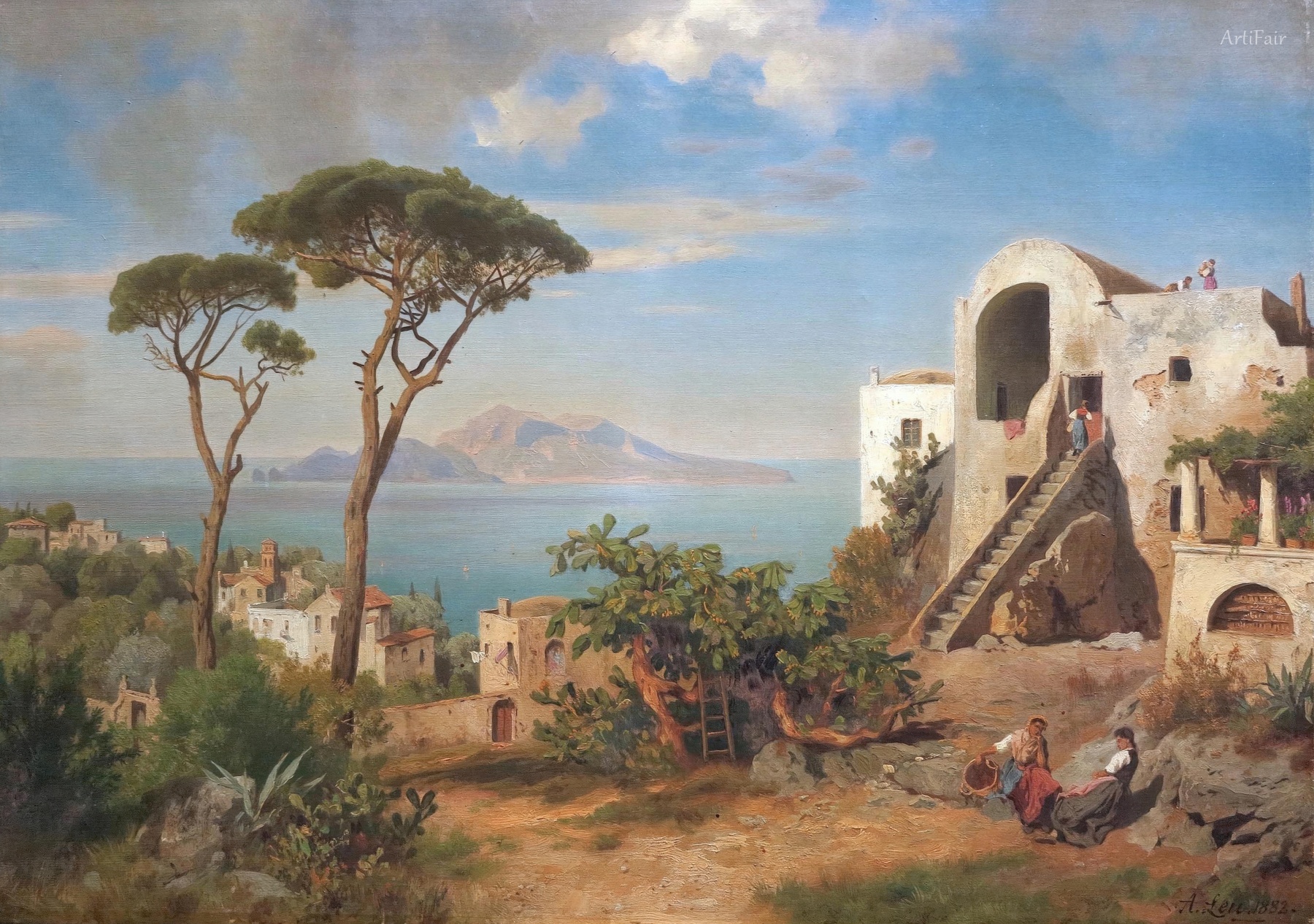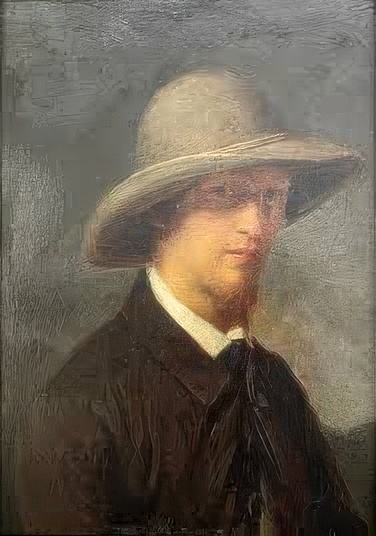

August Leu
DE
48
Artworks
1818 - 1897
Lifespan
Artist Biography
August Wilhelm Leu, born on March 24, 1818, in Münster, Westphalia, was a distinguished German landscape painter renowned for his affiliation with the Romantic school. His artistic journey began under the tutelage of Johann Wilhelm Schirmer, a prominent landscape painter of the influential Düsseldorf school, where Leu was enrolled at the Academy from 1840 to 1844. This foundational period was critical in shaping his artistic sensibilities, imbuing him with a deep appreciation for the dramatic and emotional power of nature, a hallmark of Romanticism. Even early in his career, Leu demonstrated a profound connection to the natural world, which would become the central theme of his extensive oeuvre.
Deeply influenced by Schirmer's teachings and the prevailing Romantic ethos, Leu embarked on extensive travels that were instrumental to his artistic development. His expeditions to Norway in 1843 and again in 1847 proved particularly transformative. The rugged fjords, majestic mountains, and dramatic light conditions of the Scandinavian landscape captivated him, providing a rich source of inspiration for many of his most acclaimed works. These Norwegian scenes, rendered with meticulous detail and emotional depth, played a significant role in raising awareness of Norway's scenic beauty within Germany. Leu's wanderlust also led him to explore the Swiss and Tyrolean Alps, Upper Bavaria, Styria, and Italy, further broadening his visual vocabulary and reinforcing his commitment to landscape painting. A brief sojourn in Brussels also contributed to his evolving style before he eventually returned to Düsseldorf.
Leu's talent and dedication did not go unnoticed. After his formative travels and a period refining his craft, he returned to Düsseldorf. His career reached new heights with his move to Berlin in 1882, where he was appointed a royal professor and became an esteemed member of the prestigious Academy of Art. His reputation extended beyond Germany, as evidenced by his memberships in the Vienna, Amsterdam, and Brussels Academies. Leu's work garnered significant accolades, including several gold medals in Berlin and an honourable mention at the Paris Exposition of 1855, with further recognition at the Paris World Fairs of 1863 and 1878. A signal honor was his decoration with the Belgian Order of Leopold, underscoring his international standing in the art world.
August Leu's artistic style is quintessentially Romantic, characterized by a profound, often spiritual, engagement with the natural world. He specialized in large-format canvases that captured the grandeur and sublime beauty of Alpine and Norwegian landscapes. His paintings frequently depict majestic mountains, often shrouded in mist or touched by dramatic light, serene fjords and lakes reflecting the sky, and dynamic cloud formations. A characteristic feature of his work is the inclusion of diminutive human or animal figures in the foreground, dwarfed by the immensity of their surroundings, emphasizing nature's overwhelming power and the Romantic theme of the sublime. Leu was a master of depicting atmospheric effects, skillfully rendering the brilliance of light on water, the subtle gradations of color in a sunset, or the dramatic play of sunbeams breaking through clouds. His technique, rooted in the Düsseldorf school's emphasis on detailed realism, was infused with a deeply personal and emotional response to the landscapes he portrayed.
Throughout his prolific career, August Leu produced a significant body of work that continues to be admired for its technical skill and emotive power. Among his celebrated paintings are "Norwegian Landscape with Waterfall," "Sognefjord," "Oeschinen Lake," "View of Capri (Marina Piccola)," "Hardangerfjord im Sonnenlicht," "Gebirgslandschaft mit Wasserfall," and "Sunset on the Coast at Sorrento." These works exemplify his ability to capture both the specific character of a location and a universal sense of awe before nature. His depictions of Norwegian scenery were particularly influential, introducing many Germans to the unique landscapes of the north. Leu's dedication to landscape painting and his Romantic vision contributed significantly to the genre's development in the 19th century. His legacy also extended to his family, as his son, August Leu Jr. (1852–1876), also became a landscape and animal painter, studying under his father.
In his later years, August Leu continued to be an active and respected figure in the Berlin art scene, upholding his professorial duties and contributing to the Academy of Art. His commitment to capturing the sublime beauty of nature remained unwavering throughout his life. August Wilhelm Leu passed away on July 20, 1897, in Seelisberg, Switzerland, a country whose alpine landscapes had so often inspired him. Today, his works are held in the collections of numerous prestigious museums, including those in Oslo, Bremen, Vienna, and Berlin, ensuring that his Romantic visions of majestic landscapes continue to inspire and captivate audiences. His contributions as a painter and educator cemented his place as a key figure in 19th-century German Romantic landscape art.